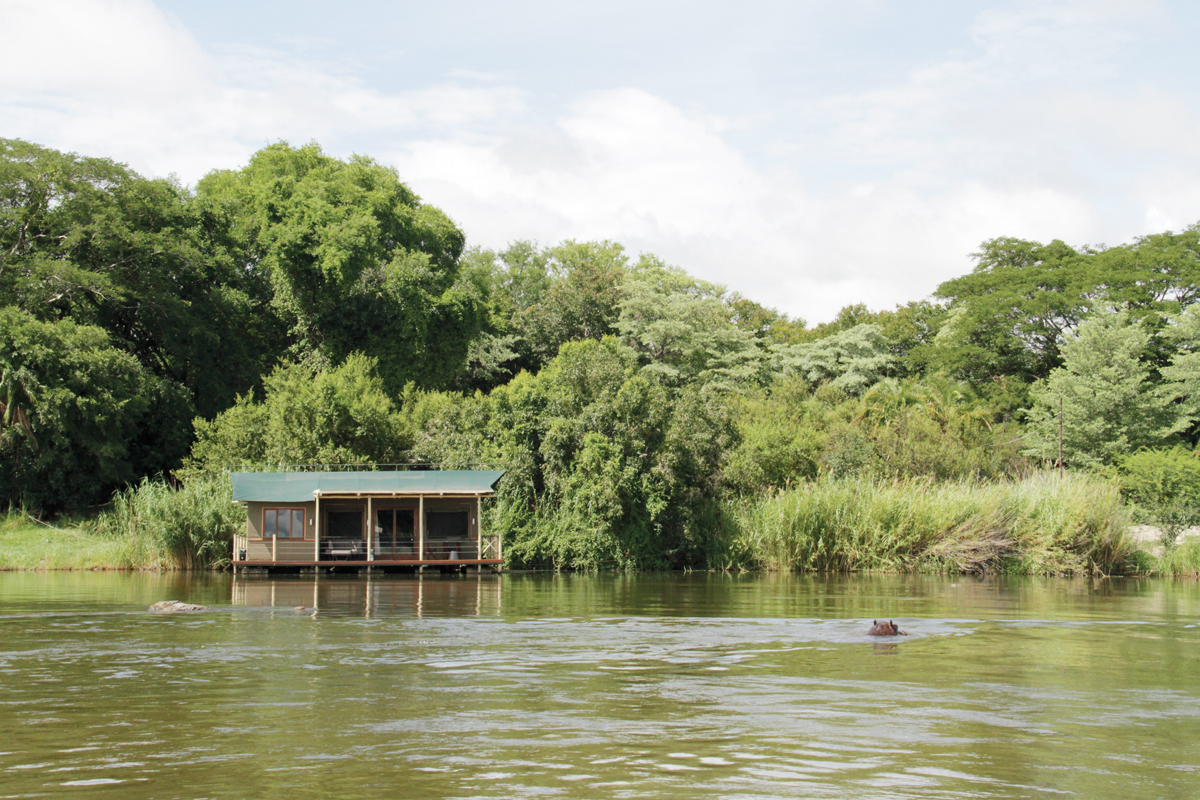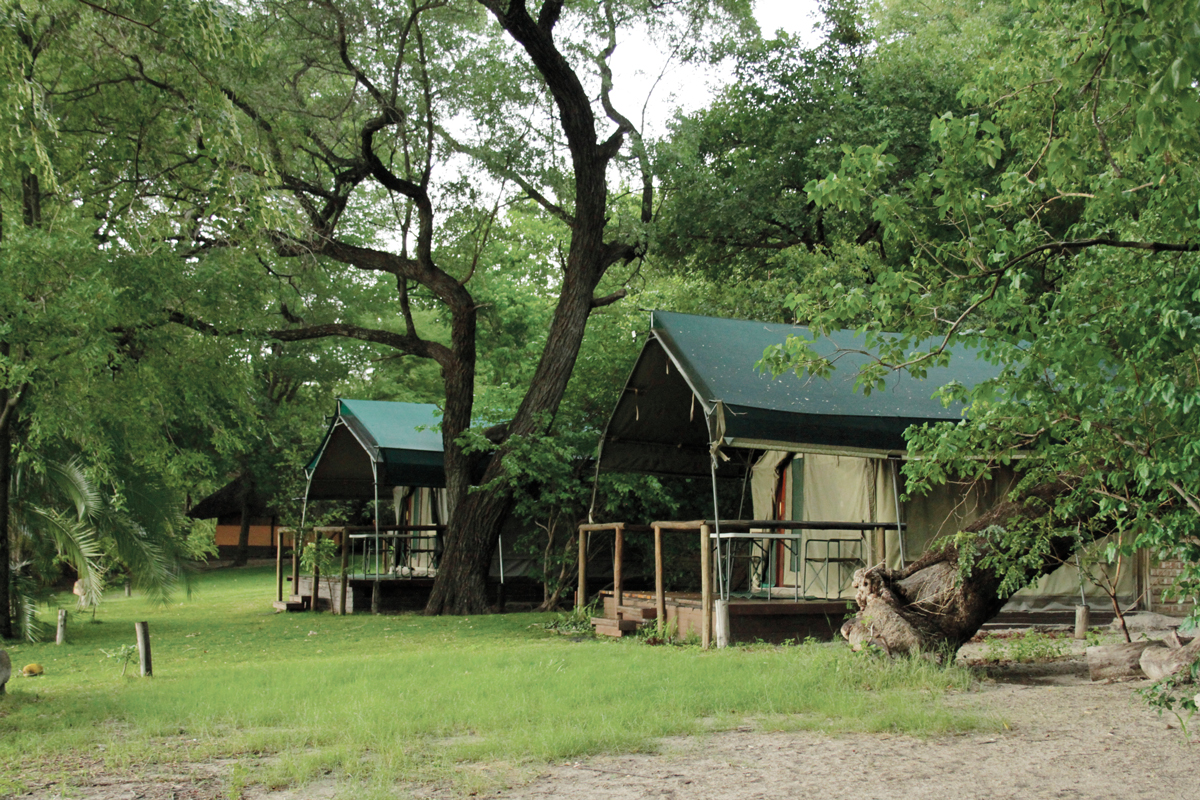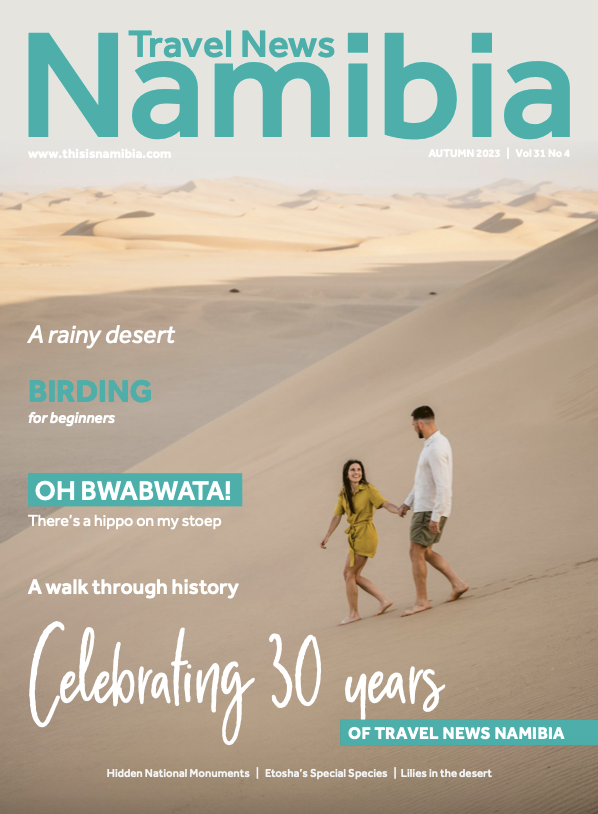

Oh Bwabwata, there’s a hippo on my stoep!
As local Hambukushu legend has it, the mighty Kangumbe was the original founder of the area today known as Bwabwata National Park. Upon exploring it for a place to settle he came across a big body of water, which indicated life and sustenance for his people. He took a lily from the water to his king, as proof that the area would be habitable. When his people saw the water lily and heard the good news, they sent out a hunter to find the largest animal in the kingdom. That very same day they enjoyed a big feast and gluttonously celebrated late into the night. The next morning however, despite the festivities on the day before, the people were not in good spirits. Many complained of stomach aches, while others admitted they were up all night with looseness of the bowels. Some even went as far as claiming that they heard horrible noises all night long, as their peers struggled to control their entrails. The sickening sounds could be heard from far and went on until daybreak, resembling a continuous “bwabwata, bwabwata, bwabwata”. The people would never forget what transpired on that joyous occasion, and because the reverberations served as an obvious reminder, they decided to call the place Bwabwata.
Text & Photographs Marita van Rooyen
From the Autumn 2023 issue
Well, this is the version of local resident and storyteller, Boniface Thinyemba Kangayi. Other, more conservative folk, say the name can be interpreted as ‘the sound of bubbling water’. Whichever account you prefer to believe, the reality is that Bwabwata National Park is a place unlike any other and its lush woodlands and waterways – with the plethora of game, fish, plants and birdlife it supports – are by far the key attraction.
One of the area’s many hidden treasures can be found at Ndhovu Safari Lodge, which is also where Boniface the storyteller goes about his day job, entertaining visitors with traditional titbits and a great dose of valuable information about local game and feathered friends. Apart from a unique proximity to the park, and being the oldest privately-owned accommodation establishment along this stretch of river, the lodge boasts the unique feature of two luxurious floating tents.
Anchored right in the Okavango, and moving in unison with the ebb and flow of the mighty water mass below, the tents not only provide a private encounter with nature as close as you can get, but also present a bathtub with a view, straight out of Cleopatra’s dream bath heaven (minus the milk). If soaking with a view is not exhilarating enough, spending time imagining yourself at one with the local wildlife gatherings will surely do the trick. This is luckily not too hard to achieve, as right at the front door lies a herd of hippos’ favourite dipping pool and during the lazy hours you can watch them bob and snort about, with the occasional, but terrifying yawn and showing off some seriously grotesque canines.
Apart from the hippo on your stoep, whether in one of the park’s core areas or on the plains across the river, expect to spot a plethora of game, including some of what Boniface calls the “ugly five”. Naturally, those are the tsessebe, hyena, warthog, wildebeest and Marabou Stork. Other rare and impressive antelope like the sable and lechwe also frequent the area, while predators like cheetah, leopard and lion often lurk around the bushes, and elephants are never too far from sight or sound. The Big Five, except for rhino, call Bwabwata home. Of course, the area is also any avid twitcher’s dream, but that’s another adventure altogether.
Rest and relax
If a floating tent with a hippo view is not really your thing, fear not: Ndhovu Safari Lodge also offers tented accommodation on land, self-catering chalets, guide rooms and camping, both for smaller parties or groups of up to twenty people. A swimming pool and bar provide relief from the heat and excitement, while the onsite restaurant cooks up next-level three-course dinners, lovingly prepared by chef Abisai Hango, who trained at the Namibia Institute of Culinary Education. There is also a unique gift shop on the premises, which specialises in hand-painted functional ceramics from Zimbabwean producer, Hippo Studio.
See the surroundings
Activities to embark on from Ndhovu Safari Lodge include guided excursions or self-drives into the Mahango and Buffalo Core Areas, boat cruises, fishing trips, cultural visits to the nearby village of Kamutjonga (which includes a stop at the kindergarten built by Ndhovu) and day trips by boat to Popa Falls. A self-drive to the nearby Khwe Living Museum is another option worth exploring. From this year the lodge also offers exclusive trips into Botswana, visiting the UNESCO World Heritage Site of Tsodilo Hills, with an optional add-on of a scenic helicopter flight.

When to visit
Bwabwata and surrounds are a paradise all year round, but travel – and wildlife viewing – is more comfortable in the dry season, from May to September. During the rainy season, plan activities for earlier in the day, as rain mostly falls in the afternoons. The hottest months are October and November, when temperatures often reach 40 degrees Celsius.
A history worth noting
In the early sixties, as countries sought sovereignty from colonial powers, the region was rife with conflict. While independence was already imminent for Botswana and Zambia, the Angolan liberation war was in full swing and Namibia’s own struggle to freedom was only just gaining momentum. By the early seventies, an armed conflict had broken out and the Zambezi strip was subsequently occupied and restricted to the military. During this time, poaching was the order of the day and as wildlife numbers dwindled, it became evident that not only was the issue of independence of dire importance, but so was the need for conservation of the area and its wildlife. This unfortunate period in history continued until the proclamation of the Mahango and Popa Falls game parks in 1989. With independence in 1990, a more inclusive and regulatory approach to conservation was initiated. Since then, wildlife has returned to the area (helped by translocations of key species), natural habitats have been restored and for the most part, local communities live in harmony with nature. An era gone but not forgotten, ruins of former military settlements, and graveyards, can still be seen scattered throughout the area today, stark reminders of Namibia’s road to independence and the preservation of its natural resources. A visit to some of these sites form part of the itinerary in the Buffalo Core Area.
Fun facts
Bwabwata National Park consists of 6 278 km², made up of the Mahango, Buffalo and Kwando Core Areas. It was proclaimed a National Park in 2007, but has been preserved as a nature park since 1963. It forms part of the Kavango-Zambezi Transfrontier Conservation Area. Ndhovu Safari Lodge is located a mere four kilometres from the entrance to the Mahango Core Area. The Buffalo Core Area is located straight across the river, and the lodge offers easy access into this part of the park by means of a quick boat cruise, from where guests are then picked up by their guide and safari vehicle.
An interaction with wild Namibia at its best!






